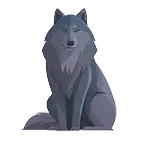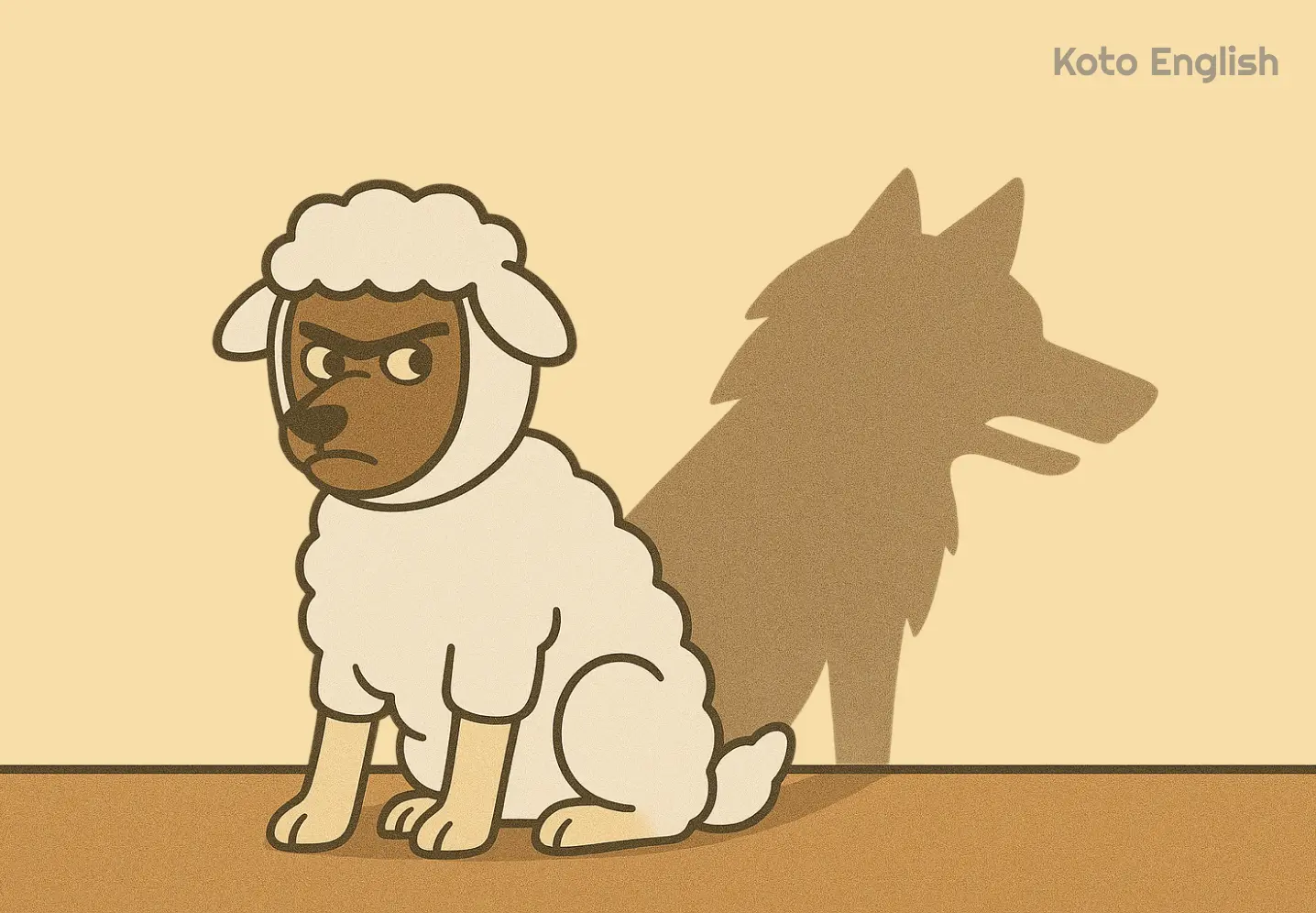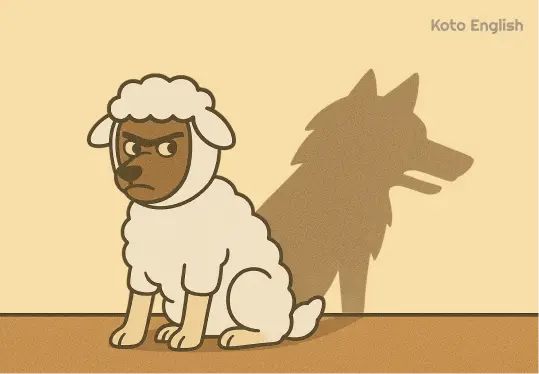

Wolf (noun) — a big wild carnivorous mammal that is grey or brown in color, has sharp teeth and has a bushy tail. Wolves are hunters that live and hunt in packs, are skilled hunters and are mostly located in forests, tundra and grasslands in Europe, Asia and North America.
They are complex communicating social animals, frequently feared or misunderstood.
How to Pronounce “Wolf”
The w is pronounced distinctly, the o is the vowel in put and the lf is softened.
Level up your English with Koto!
Examples: How to Use “Wolf” in a Sentence
Context turns words into understanding. Review these sentences to see how “wolf” works in real life.
What Are Synonyms for the Word “Wolf”?
Although there are not many synonyms of “wolf,” you can specify the types of wolves, i.e., grey, Arctic or red wolves. It may also be allegorically used to denote someone who is ferocious, witty, or autonomous.
Related nouns: pack howl fangs den
Synonyms (contextual): predator wild dog
Common collocations: lone wolf wolf pack wolf cub wolf howl wolf territory
“Wolf” Word Formation and Description in Context
Having the knowledge of phrases in parts of speech lets you define a “wolf” and discuss its appearance, behavior and actions.
With adjectives: hungry wolf lone wolf cunning wolf alpha wolf grey wolf
With verbs: wolf hunts wolf howls wolf defends wolf stalks wolf runs
With nouns (noun + noun): wolf cub wolf pack wolf habitat wolf species wolf leader
Idioms and Phrases with “Wolf”
The human concepts and features of the animal, like being clever, taking risks, or being independent, are emphasized in the word “wolf” when used as an idiom. Study by examples:
-
Lone wolf — an individual who likes doing things on their own instead of in a group.
Jenna has always been a lonewolf ; she does the work independently without enlisting assistance. -
Cry wolf — to make a false alarm or a warning when there is no actual danger.
The children criedwolf a number of times so nobody believed them when the fire broke out. -
Wolf in sheep’s clothing — a person who seems to be harmless or good, but is actually dangerous or deceptive.
Caution with that manager, he looks like a friend, but he is awolf in sheep’s clothing.


-
Wolf down — to consume something in a hurry and with great eagerness.
Markwolfed down his lunch as he was in a hurry to arrive at the meeting. -
Throw to the wolves — to abandon one to a difficult situation, frequently unjustly.
During the presentation, the new worker was thrown to thewolves and had to respond to all the hard questions on his own.
Quiz Time: Find Out What You Know About “Wolf” Meaning
These exercises will help you to develop your knowledge about using the “wolf” word and its different forms.
Enjoy personalized learning!
Cross-Language Spellings of “Wolf”
Originating from the Old English wulf and with roots in Proto-Germanic and Proto-Indo-European, here’s how to say “wolf” in different languages, including French, Spanish, and German.
| Language | Word for “Wolf” |
|---|---|
 Spanish
Spanish |
Lobo |
 French
French |
Loup |
 German
German |
Wolf |
Incredible Wolf Facts You Should Know
Behind all the howls, there is a tale. These are a few wolf facts that could help you look at them differently.
-
The wolves have long-distance communication.
The howl of a wolf may be heard at a distance of 10 miles. This is not to show off, it indicates the whereabouts of the pack and advises competitors to keep off. -
They are communal predators and very well coordinated.
The wolves are team players, and they hunt with the help of teamwork and maneuvers. They are very good predators because they have sensitive senses (scent, eyesight and hearing). -
Wolves are marvelous runners.
Wolves are fast enough to go up to 60 km/h (37 mph) in short bursts and this can assist them in stalking down their prey. -
Pups are reared by the whole pack.
Wolf cubs are not only taken care of by their parents but also siblings and other adults, making the pack a close family. -
Wolves use scent marking to identify their territory.
Wolves use urine, feces and scent glands to mark territory to the other packs and avoid unnecessary fights.
Notable Lines and Quotes with “Wolf” Word
These well-known quotations aid in identifying a “wolf,” illustrating how literature and society depict its slyness, independence, and untamed nature.
— Aristotle
Explanation: When Aristotle speaks of the wolf, he puts it on the list of animals that are never tamed. It shows the early perception of the wolf as a constant representation of wilderness, danger, and instinctiveness, as compared to other animals like elephants that can be trained to be controlled by humans.
— Abraham Lincoln
Explanation: A line demonstrates how, depending on one’s viewpoint, “liberty” can signify multiple things. The shepherd is a hero because liberty means safety and protection from harm to the sheep. This passage demonstrates how concepts like freedom are relative and contingent on one’s perspective.
— William Congreve
Explanation: A ravenous wolf will charge at a whole herd in the hopes of capturing at least one animal during the chaos. Figuratively, it illustrates how avaricious or desperate people may pick numerous targets in an attempt to obtain a single prize.





